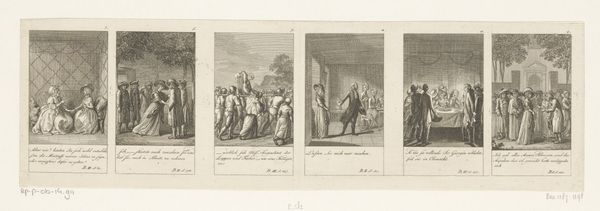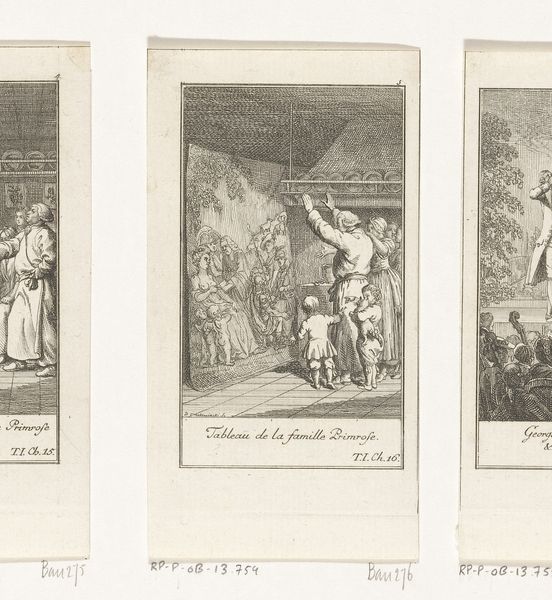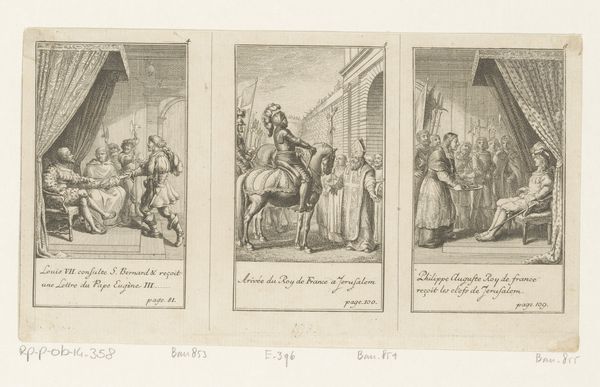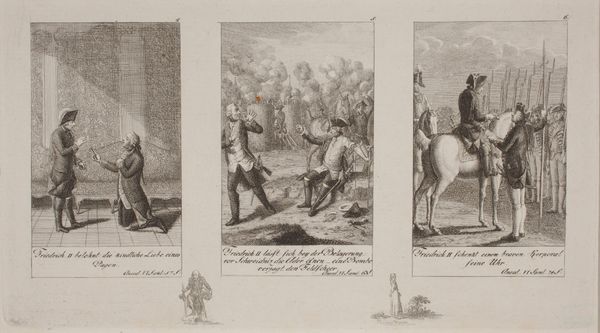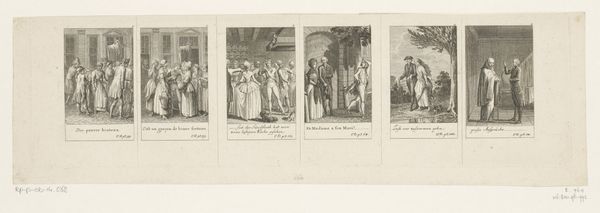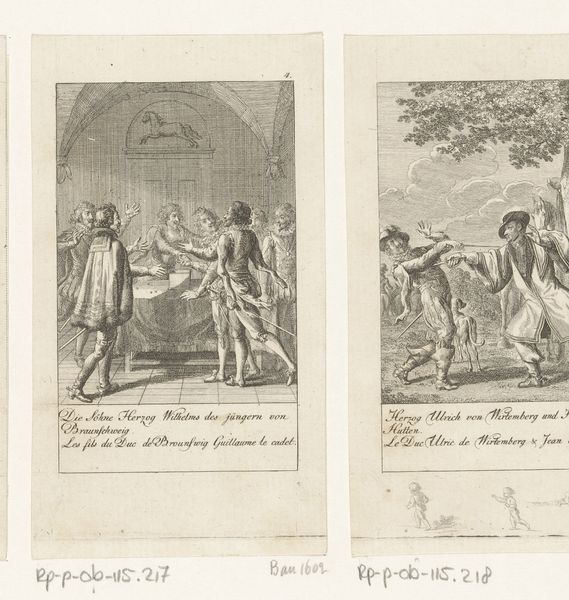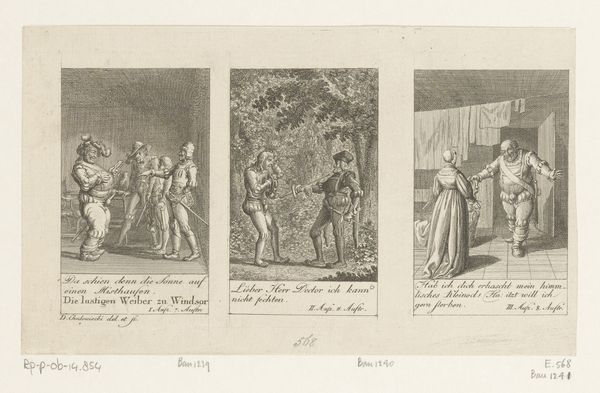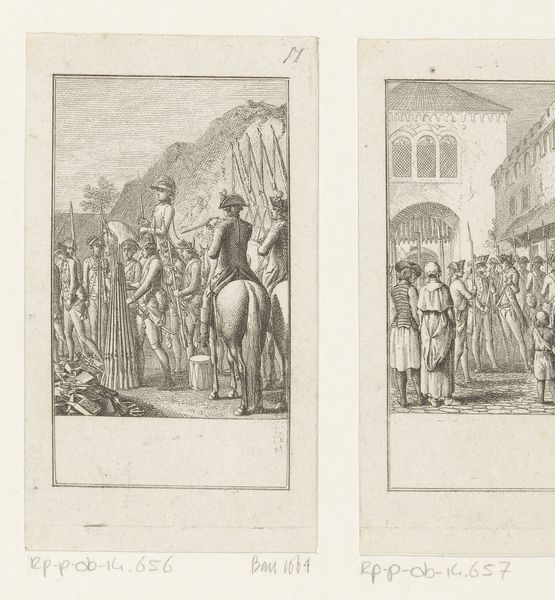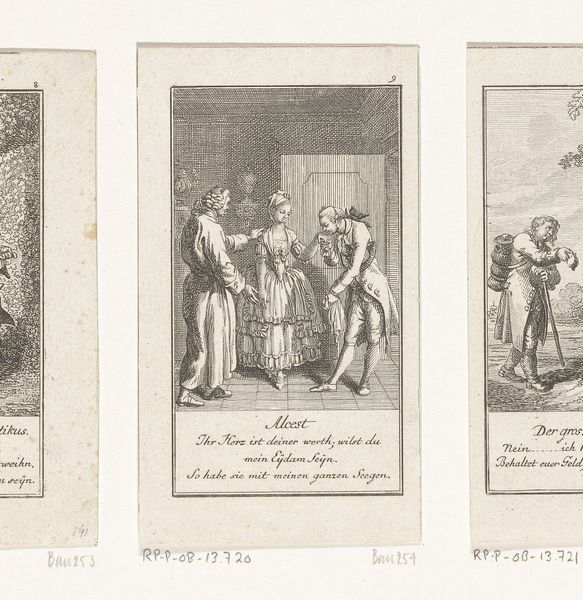
Copyright: National Gallery of Art: CC0 1.0
Curator: Daniel Nikolaus Chodowiecki created this engraving titled "The History of the United States" between 1783 and 1784. Editor: It's a stark image, divided into three distinct scenes. There's a definite tension in the air, almost a sense of foreboding. Curator: Indeed. Considering the socio-political climate of the time, Chodowiecki offers a narrative of early America marked by both conflict and the burgeoning desire for self-determination. The events portrayed serve as significant markers in the unfolding drama of a nation seeking to define itself, with figures captured in moments laden with implication for concepts of freedom. Editor: I’m struck by the recurring visual motifs: groups of figures surrounding a central event. This seems to highlight pivotal moments in this history. Do you think he's also commenting on how individual acts become part of the larger cultural narrative? Curator: Absolutely. Think of it in terms of Romanticism: each episode, though specific to its historical context, echoes broader themes like resistance and liberty. Each panel, read sequentially, provides a compelling visual narrative of the shift in power during that period. Editor: The print evokes an almost anthropological study through repeated visual icons of armed conflict and negotiation. The figures appear caught in a net of evolving political power relations. I wonder how audiences at the time received these representations, if they saw them as propaganda or accurate representations? Curator: It's important to look at Chodowiecki’s background, too. As an artist with ties to both Polish and French culture, his interpretations bring nuanced perspective. We might read this work as a powerful expression of resistance, yet also reflecting on its implications in the longer sweep of history. The choice to record such recent history visually elevates certain actions. Editor: The engraving becomes more than just documentation; it is itself part of constructing a specific history. What resonated most with you as we explored the work? Curator: Understanding this work helps us consider whose stories are visually rendered, and whose erased. Ultimately, that critical engagement reveals the ongoing contestation surrounding identity, power, and freedom in art and beyond. Editor: I see echoes that linger today—how power structures are challenged, visualized, remembered, or re-interpreted to either change them or entrench them. Food for thought indeed.
Comments
No comments
Be the first to comment and join the conversation on the ultimate creative platform.
